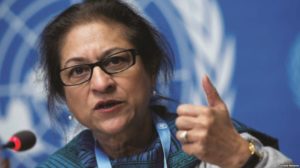6 May: WORLD LAUGHTER DAY
It is celebrated on the 1st Sunday of May each year, with the aim of bringing peace in the world through laughter.
Laughing and hugging feel good, but few realize how valuable these simple tools can be in improving our sense of wellness. Laughter can help to heal and dissolve everything.
Laughter is the cheapest, most available, effective, palatable and enjoyable ‘medicine’ God created for us.
Doctors and psychologists have researched on this wonder-drug which they call Laughter Therapy: the use of humor to promote overall health, to relieve physical or emotional discomfort. A good laugh makes us feel better, stronger, more capable of thinking objectively and creatively. We learn to overcome difficulties rather than be overwhelmed by them. It is the body’s natural physiological process to release the painful emotions of anger, fear and boredom.

When we laugh, our body relaxes. Endorphins (natural painkillers) are released into the blood stream. Laughter provides a full-scale workout for our muscles. You do not need to be happy or have a sense of humour to benefit from a good laugh. But who wants ‘fake’ laughter when we can have the real thing?
Psychologist William James said: “We don’t laugh because we are happy; we’re happy because we laugh.”
So: “Laugh and be merry, remember, better the world with a song,
Better the world with a blow in the teeth of a wrong.” (John Masefield)
So, laugh. It helps you to:
- live longer
- Boosts your Immune System and protects your Heart
- Relieves Pain and Reduces Depression
- Improves your Breathing and Blood Circulation
- Helps You Lose Weight
- Boosts your Relationships
15th May: INTERNATIONAL DAY OF FAMILIES
The International Day of Families is an occasion to reflect on the work started during 1994, the Year of the Family, and to celebrate the importance of families.
Is the family in crisis?
There is a widespread perception at the present time that something has gone wrong with the family. High rates of divorce, increased marital conflict, rising crime, drug-taking and anti-social behaviour among the young, are all taken as evidence that the family and the social values on which it is based are in decline.
Pope Francis speaks:
“For most of us, the family provides the principal place where we can aspire to greatness as we strive to realize our full capacity for virtue and charity. At the same time, as we know, families give rise to tensions: between egoism and altruism, reason and passion, immediate desires and long-range goals.”
Declining family values and divorce affect those who suffer the most—women, children, and the elderly: “We now live in a culture of the temporary, in which more and more people are simply giving up on marriage as a public commitment.”

How to Observe the International Day of Families
- Volunteer with your family
For example: join an organization that builds houses for those in need. Build a house for a family while bonding with yours.
- Reflect on just what family means to you
Family isn’t always blood. It is the people in your life who want you in theirs; the ones who accept you for who you are. The ones who love you no matter what! Think about what family really means to you, and how you can get closer to the people you love.
- Organize a community family picnic
There might be many families in your neighborhood that would love to get to know one another but just haven’t figured out the best way to. Plan a picnic together.
- What do people do?
A wide range of events can be organized at local, national and international levels. These include:
- workshops, seminars, exhibitions
- educational sessions for children and young people;
- policy meetings for public officials and launching of campaigns to strengthen and support family units.
Family is what God gives to us. The Family Day is what we can give to one another!
Another Special Day in May: 13th May: Mother’s Day. Don’t forget to do something special for your mother!
Sr Esme Da Cunha FDCC
To subscribe to the magazine Contact Us


















